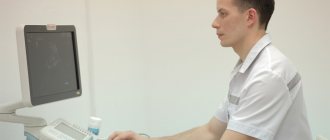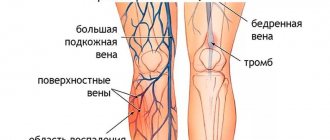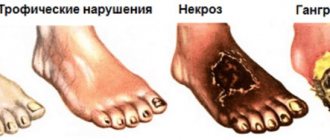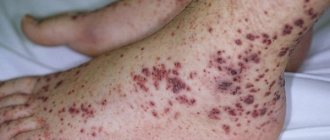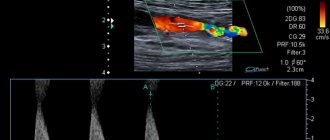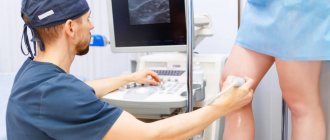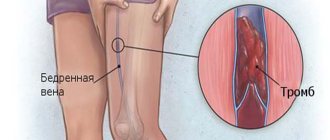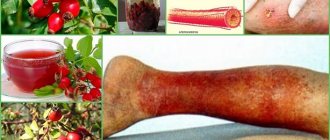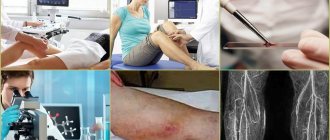Nowadays, diseases of the cardiovascular system are a very common ailment. Today, cases of such pathologies occurring even in young people, as well as in those who spend most of their time outdoors, have become more frequent.
Heart disease often leads to many complications, as well as disability or death. The concept of “diseases of the cardiovascular system” covers a whole complex of lesions of the heart and blood vessels, combined into one large group. Oddly enough, the leading place in the system of diseases is occupied by vascular diseases of the lower extremities.
Disorders of this nature can be combined into a whole list. They may not pose a threat at first and pass without visible symptoms. However, there are also those diseases that require immediate treatment, without which there is a risk of serious negative consequences. Therefore, it is necessary to know the main signs of vascular diseases of the legs, as well as methods of treating them.
Atherosclerosis
This disease is characterized by the deposition of cholesterol on the surfaces of blood vessels in the form of plaques due to deterioration of fat metabolism. Untimely treatment of this pathology leads to the formation of coronary disease.
When atherosclerosis appears, the following signs are observed:
- discomfort in the calf muscle during movement;
- the appearance of pain during intense physical activity, as well as when running, long walking, or climbing stairs;
- manifestation of lameness;
- Dry gangrene may be observed on the affected areas.
Atherosclerosis of the legs.
Diagnostics
At the first examination, the doctor conducts an examination using tests for blood patency in the peripheral arteries, and also measures the blood pressure index. During a visual examination, the doctor pays attention to baldness of the legs and nails.
After a preliminary diagnosis, the patient is referred for instrumental diagnostics:
- Magnetic resonance imaging of the main arteries of the lower extremities;
- MSCT angiography (multi-spiral computed tomography);
- Measurement of blood pressure index in the arteries on the ankle;
- Arteriography of peripheral vessels;
- Scanning of peripheral vessels;
- Determination of pulse in the ankles and thighs;
- Examination by a phlebologist.
Laboratory diagnostic methods include:
- General analysis of blood composition;
- Biochemical analysis with a lipid profile, which reflects cholesterol and all its fractions, as well as the blood glucose index.
The doctor also checks the patency of the blood flow through the main arteries using ultrasound. The instrumental method checks the noise of blood flow passing through the main artery.
Diagnosis of atherosclerosis of the lower extremities
Endarteritis
This disease of the blood vessels of the legs is no less common. The pathology manifests itself gradually and is localized in the lower part of the extremities. At the first stage, the contraction of blood vessels slows down, which subsequently leads to the second stage - their blockage. Due to this process, tissues die, which means they do not receive the necessary blood flows.
The disease is characterized by the following symptoms:
- constant fatigue in the legs;
- feeling of “cold” aching” in the lower extremities for a long time;
- convulsions (possible);
- feeling of “aching” pain in the legs;
- lameness.
Venous blood flow disorders
There are several reasons for impaired venous blood flow. In this case, the lower extremities are often affected. This is due to the heavy load on the legs. Thanks to the veins, blood flows out of the lower extremities. Diseases in this group include varicose veins and phlebitis. Both pathologies are associated with structural changes in blood vessels. The veins of the lower extremities are affected by systemic vasculitis, some infectious diseases, and diabetes mellitus. Blood circulation in the legs is impaired due to pathological tortuosity of blood vessels, stenosis and inflammation of the vascular wall.
Obstruction of the vein lumen leads to the formation of trophic ulcers and tissue necrosis. If help is not provided on time, gangrene of the lower limb develops. Most often, necrosis of leg tissue occurs due to increased concentrations of glucose in the blood in diabetes. The second most important reason is thrombophlebitis. It occurs due to the appearance of a blood clot in the lumen of the vein. Thrombophlebitis is not an independent disease, but is considered a complication of other pathologies. An example is various infections that lead to systemic blood thickening, in particular sepsis.
Also, the appearance of blood clots can be caused by cardiovascular pathologies. In this case, the mechanism of development of the disease is similar to the pathogenesis of heart attack and stroke. The only difference is the location of the lesion. Other causes of impaired venous blood flow in the lower extremities include prolonged immobilization and cancer.
Symptoms of thrombophlebitis include leg swelling and hyperemia. Impaired blood flow is accompanied by severe pain not only when walking, but also at rest. To save the leg from amputation, immediate surgical treatment is required.
Phlebeurysm
In everyday life, this disease is also called varicose veins. It is defined as a disorder of the veins, which is often localized specifically in the lower extremities. The disease has clear symptoms, so it is easy to distinguish from others. A “bulge” is clearly visible, which is not natural when the blood vessels are healthy. Most often, this process occurs due to insufficient flexibility of the veins and poor circulation in a particular area.
Varicose veins are characterized by slow development, where symptoms appear gradually. Based on the symptoms, this disease can be defined as “heavy leg disease.” The disease is characterized by the following symptoms:
- visible expansion of veins under the skin;
- feeling of weight in the legs;
- rapid fatigue of the legs;
- burning sensation inside the skin;
- sharp pain syndromes and cramps in the calf muscles, especially during sleep;
- swelling of the lower extremities.
The disease itself is not life-threatening, but the complications it causes can cause significant harm to the body. Let's look at some of them.
General symptoms of vascular diseases
Vascular diseases can have similar symptoms. Therefore, one disease can be mistaken for another. To prevent this from happening, you should seek help from specialists. The following signs may be the reason for this:
- The appearance of stars from the vessels at a certain place in the lower limb. This manifestation indicates that the cardiovascular system is not coping with its work in this area.
- The occurrence of swelling. Edema appears both symmetrically and in different places on the limbs. Moreover, they do not depend on what a person drank or ate. Edema indicates that blood stagnation in the vessels begins.
- Changes in the color and structure of the skin. This occurs because the problem has gone beyond the vein or artery. Due to the lack of oxygen and nutrients, the skin cells of the legs begin to suffer. When this problem occurs, immunity is significantly reduced, and the likelihood of purulent-inflammatory processes arises.
- Restriction of movement of the lower limb. Even any light physical activity is not feasible for a person who develops vascular disease of the lower extremities.
- Cramps and pain at night. These symptoms bring a lot of inconvenience to a person, so he often suffers from insomnia and searches for a comfortable position for sleeping.
- The appearance of numbness in all or part of the limb. This indicates that blood does not flow to the affected area, resulting in disruption of the blood vessels. In this case, the nerve endings are compressed by swollen veins or damaged tissues.
Vascular disease of the lower extremities is very dangerous for the body, as it can lead to the development of other ailments that affect the functioning of vital organs.
Saphenous vein thrombosis
Usually, the occurrence of blockage of veins under the skin occurs together with varicose veins. This pathology is characterized by the following symptoms:
- Redness;
- The appearance of infiltration at the site of the disorder;
- Painful sensations of the lesion.
The diseases presented above are the most common, however, these are not all possible circulatory disorders of the lower extremities. In reality, there are many more of them, and each of them is represented by different, but partially similar symptoms.
Only a specialist - a phlebologist - can make a correct diagnosis and prescribe effective treatment. The presence of at least one of the indicated signs may be a reason to visit a doctor. However, we can speak directly about the development of any venous disease only if pain in the legs causes concern for a long time.
Thrombophlebitis
This disease is characterized by inflammation of the walls of the veins with a simultaneous increase in blood viscosity, the formation of blood clots, narrowing of the lumen of blood vessels and poor circulation. Blood clots are life-threatening because they can break off and enter any part of the circulatory system, including the pulmonary artery. Often thrombophlebitis of the lower extremities develops with varicose veins, but there are other causes of the pathology:
- Infectious diseases.
- Injuries of the lower extremities.
- Increased blood clotting.
- Changes in blood composition, for example, as a result of taking certain medications.
- Pregnancy and childbirth.
Thrombophlebitis that develops with varicose veins usually affects the lower part of the thigh and the upper third of the lower leg. The following symptoms are noted:
- general deterioration of health (malaise, fever);
- pain in the area of the affected vessel, which intensifies with movement;
- redness and shine of the skin in the projection of the affected vein;
- swelling of the affected leg and its noticeable difference in size from the healthy one;
- infiltrates in the form of cord-like seals are easily palpable.
Treatment of thrombophlebitis primarily involves taking blood thinners to prevent blood clots, followed by anti-inflammatory drugs. If a blood clot is present, surgical intervention is indicated to remove the blockage of the vein. In addition, it is necessary to wear compression hosiery, use gels, massage, and physical exercises that improve blood circulation in the veins.
Traditional Treatments
After examining the patient by a doctor and conducting diagnostics, the necessary treatment is prescribed. The nature and methods of therapy chosen depend on the severity of the disease, the manifestation of symptoms and some other factors.
As a rule, for the treatment of vein diseases, the use of an integrated approach is encouraged, combining physiotherapeutic methods of recovery, medication, exercise, and traditional medicine. However, in cases where the above methods do not give a positive result, surgical intervention will most likely be required.
Most often, the following drugs are used to treat the previously mentioned diseases:
- To increase the venous outflow of blood in the legs and normalize the condition of blood vessels - the drug Venarus (and similar);
- Medicines that stop the formation of blood clots - Heparin ointment, Lyoton-gel;
- Blood thinners (for oral administration) – Aspirin, or products containing it in their composition;
- Restorative drugs (taken for tissue damage): Solcoseryl, Actovegin, as well as some antibacterial ointments;
- Vitamins (complement treatment). In particular, vitamin C and B vitamins will have a rehabilitating and strengthening effect.
Some drugs are intended for oral administration, while others are for external use. The latter are applied under bandages for better results.
Medicines for cleansing blood vessels
Aspirin
The use of medications can reduce blood cholesterol levels to normal and prevent the formation of new atherosclerotic plaques. You can clean the blood vessels in your legs using:
- Statins (Aspirin, Simvastatin, Acecardol) - thin the blood and prevent the formation of blood clots.
- Fibrates (Clofibrate, Bezafibrate) - promote the breakdown of lipids and reduce the level of bad cholesterol.
- Bile acid sequestrants (Colestyramine, Colestipol) - bind substances of the same name in the intestine and prevent their reabsorption.
- Nicotinic acid - dilates blood vessels, helps improve nutrition of cellular structures of tissues.
ethnoscience
Folk remedies are used as a supplement to the main treatment of the body for vascular diseases of the lower extremities. Consequently, without drug therapy, such treatment will not bring the desired result, which once again emphasizes the need for an integrated approach to solving the problem. Most of all, the use of traditional medicine is widespread in the fight against varicose veins, but this technique is also effective in the treatment and prevention of other vascular diseases. Below are the most effective means:
- Dandelion root is the main “representative” of medicinal plants, which helps in the treatment of varicose veins on the legs. It should be consumed in dried form with food (two roots per day are enough to achieve the desired effect). This therapy, combined with the use of drugs, helps cure varicose veins in a short time. In cases where the disease is complicated by diabetes, the dose is doubled.
- Horse chestnut is also useful for vascular diseases . It is actively used even in traditional drug treatment (added to many drugs). The method of preparing medicine from this folk remedy is as follows: a tincture is made from chestnut fruits and vodka in a ratio of 50 grams per half liter, the resulting solution should be used 14 days after preparation. The dosage is 30-403 times 30-40 drops.
- Coltsfoot leaves are used to treat inflammation of the lower extremities in similar diseases. This remedy is used externally (dressings are made at night with the addition of this plant). The course of treatment is a week. The product is effective for all diseases and injuries associated with vascular pathologies. If it is not possible to find coltsfoot, you can replace it with leaves of white cabbage, which has a similar effect on the body.
- Parsley compresses can also be used in therapy : first, a decoction is made from it, to which milk is added, after which bandages moistened with this solution are applied to the damaged areas.
Drug and surgical treatment
Drug therapy is used at the initial stage of diseases of the veins and arteries. It is used for almost all vascular pathologies. The choice of medication depends on the nosology. For infectious processes, antibacterial and antiviral agents are used. If the cause of blood flow disturbances is systemic pathologies of connective tissue, hormonal drugs are prescribed. For varicose veins, it is recommended to use ointments and gels to strengthen the vascular wall. Such drugs include the drugs “Troxevasin”, “Antistax”, “Ascorutin”. If these medications do not help, laser procedures or cryodestruction are prescribed.
If the blood flow disturbance is severe, surgical treatment of the vessels of the lower extremities is required. It is necessary when the lumen of an artery or vein is more than 50% obstructed. In such cases, stenting or bypass surgery of the vessel is required. The extent of the operation depends on the extent of the lesion and the general condition of the patient.
Prevention of vein and vascular diseases
After treatment, it is important to protect the patient from relapses of venous and vascular diseases in the future. To do this, it is imperative to carry out preventive measures. This will also help reduce the likelihood of other cardiovascular diseases. Preventive measures are aimed not only at preventing the onset of diseases, but also at improving the health of the entire body and normalizing the functioning of the blood supply system as a whole. Prevention includes several factors:
Diet
In order to protect your body from vascular pathologies of the lower extremities, you must adhere to the correct diet. The basics of this order are as follows:
- food must be taken on time;
- The same amount of time should pass between meals;
- nutrition must be balanced, that is, contain the required amount of all nutrients.
It is also very important not to overeat and avoid eating high-calorie foods shortly before bedtime (eating at night can provoke the development of blood clots). Moreover, each vascular disease of the legs has its own nutritional characteristics.
Activity
People who lead an active lifestyle are much less likely to develop vascular disease than those who spend most of their time sedentary. To prevent the formation of blood clots, constant walks in the open air (especially in the summer and spring), as well as physical activity, are useful. An active lifestyle prevents the occurrence of pathology, making blood vessels stronger and more elastic. Moreover, the body is fully saturated with oxygen, which has a positive effect on the normalization of blood circulation.
Selection of clothes and shoes
One of the many reasons for the development of varicose veins is uncomfortable shoes and clothing, which constantly seem to “squeeze” the skin. skin. Also, this disease in the lower extremities can appear due to constant wearing of high-heeled shoes. In order to protect yourself from the development of pathologies of blood vessels and veins, it is best to wear uncomfortable shoes that cause discomfort less often. Clothing should be light and loose, not constricting blood vessels.
Vitamin intake
The strength and elasticity of blood vessels is largely ensured by vitamins, which must be consumed daily. Vitamins C, P and K have a positive effect on the cardiovascular system. The first serves as a source of collagen, which is able to restore the strength of affected tissues, including blood vessels. Vitamins P and K are used to maintain the elasticity and tightness of veins.
Diseases of blood vessels and veins in the legs are a common problem that, unfortunately, can affect everyone sooner or later. If such a diagnosis is made, it is imperative to fight the pathology, despite the sometimes mild symptoms of the disease. After visiting a phlebologist, the patient receives a course of drug treatment, which can be usefully combined with the use of folk remedies.
Such therapy can have a positive effect and alleviate the course of the pathology. It should also be taken into account that the likelihood of getting any of the vascular diseases discussed is significantly reduced and reduced to zero if you follow the basic rules of prevention. Compliance with them will not be difficult: you need to lead an active lifestyle and drink more vitamins. Simple rules will protect you from the occurrence of diseases that, in advanced form, can cause significant harm to the human body.
Prevention of diseases of the lower extremities
A necessary condition for prevention is proper physical activity. Walking, walks in the fresh air, therapeutic exercises - all this will help avoid the formation of blood clots and saturate the tissues of the legs with oxygen. For prevention, proper nutrition is also necessary. You should not overeat at night, as this increases blood clotting. Other prevention conditions:
- wear comfortable, not tight clothes and shoes;
- reduce the time you wear high heels;
- periodically drink vitamin complexes;
- prevent the body from overheating;
- eat a balanced diet with plenty of vegetables and fruits in your diet;
- When working sedentarily, take regular breaks - every half hour.
Garlic is the first helper of blood vessels
Garlic has magical properties, it can improve vision, relieve headaches, and prevent the deposition of cholesterol in blood vessels, prolonging their youth. Cleaning blood vessels with garlic is considered so effective that it is not recommended to repeat it more than once every 3-5 years.
Several effective recipes:
- Required ingredients:
- garlic – 350 gr;
- alcohol – 200 gr.
The garlic is ground to a paste. The mixture is poured with vodka and closed tightly. The medicine is infused in a dark place for 10 days. Consume internally after filtering. The tincture is stored in the refrigerator. The full course is 1.5-2 months. The drug is taken before meals three times a day.
Important! To avoid irritating the gastric mucosa, drink the tincture with milk. It acts as a neutralizer. Another condition: the number of drops is increased with each subsequent dose, starting from one and ending with 15. Then countdown to one drop.
If for some reason drinking alcohol is contraindicated, you can use the following recipe.
- A mixture of garlic, lemons and honey.
The medicine has a combined effect on the body, strengthening the immune system, toning, and increasing brain activity. At the same time, blood circulation in the vessels is improved and cholesterol plaques are destroyed.
To prepare you will need:
- lemon – 6 pcs.;
- garlic – 4 pcs.;
- honey – 350 gr.
After grinding the components, honey is added. The mixture is mixed and left in the refrigerator to infuse for 10 days. The tincture is filtered before use.
To reduce the level of “harmful” lipid, take 1 tbsp. l. before meals, diluted in a glass of water. The recovery course lasts 1.5-2 months.
Contraindications to the use of garlic tinctures include pregnancy, breastfeeding, and diseases of the digestive system.
Miracle garlic
Effective methods for cleaning blood vessels on the legs
To reduce the amount of low molecular weight lipoprotein, minimize the degree of formation of harmful cholesterol. Qualified doctors offer a number of proven techniques. These include:
- drug treatment option. Oral intake of tablets allows you to reduce the level of lipoproteins in the blood, minimizing the cholesterol produced by liver cells. Thrombus structures dissolve, optimizing the process of fat absorption;
- restorative procedures. The patient's blood plasma is passed through filters that clean it from unwanted excesses such as LDL, which affect the formation of pathogenic plaques in various vessels (including the capillary network of the lower limb);
- dieting. Organizing a high-quality diet allows you to optimize metabolism in cells and reduce the level of organic compounds;
- folk remedies. Medicines of natural origin improve metabolic processes in various body systems. They are saturated with nutrients and vitamins that affect the functioning of the immune system and the development of pathogenic microflora;
- elimination of risk factors. Give up bad habits and increase your level of physical activity. This approach allows you to treat hypertension, diabetes, optimize blood flow, metabolism and improve the vascular factor.
Is it worth doing something about clogged arteries?
Clogged arteries significantly increase the likelihood of a heart attack, stroke, and even death. Because of these dangers, it is important to know, no matter how old you are, about the causes of plaque and artery treatment strategies to prevent serious consequences.
But before you start taking any action, we recommend that you familiarize yourself with the reasons that cause these same plaques. Maybe thanks to this you will be able to come to the right conclusion and find your solution to the problem. After all, often the disease occurs due to wrong habits, which you can always get rid of if desired and with the right incentive.
Polluted arteries. Do they cause any symptoms?
In many cases, clogged arteries do not cause any symptoms until a serious event occurs, such as a heart attack or stroke.
At other times, especially when the artery is 70% or more blocked, arterial plaque buildup can cause symptoms that include:
- Chest pain;
- Shortness of breath;
- Cardiopalmus;
- Weakness or dizziness;
- Nausea;
- Sweating.
The first symptom, chest pain, is also called angina. This may be due to decreased blood flow to the heart. This reduced blood flow is caused by plaque in the arteries leading to the heart.
Operation
Treating with surgery is not an easy question, because the circulatory system is affected. However, a council of doctors chooses surgery if conservative therapy does not produce positive results and threatens the appearance of unwanted complications.
In case of arterial occlusion, direct or indirect embolectomy is performed:
- direct embolectomy. With this method, the vessel is exposed at the site of the embolism, and the ends of the vessel are clamped. It is then incised above the embolus, at the point where the vessel has changed lumen or direction. This method is not always applicable because the embolic site is sometimes inaccessible;
- indirect embolectomy. It is divided into orthograde, in which the catheter is inserted along the blood flow, and retrograde, when the catheter is inserted against the blood flow. A catheter is inserted to the embolic site to aspirate the thrombus mass. Today, a special embolectomy catheter has been developed, which is a thin tube with one pointed end, and the other end is equipped with an inflating balloon. The catheter is inserted into the lumen of the vessel, passed through the embolus, then the balloon is inflated, and the catheter is carefully removed from the vessel along with the embolus.
In case of occlusion of venous vessels, other surgical measures are carried out:
- sclerosants are introduced into the lumen of the vein;
- thrombectomy is performed using an endoscope;
- when indicated, venectomy is performed;
- Modern techniques use radiofrequency obliteration of veins;
- Another new technique is endovenous coagulation using a laser;
- ligation of superficial veins;
- installation of vena cava filters.
The task of surgeons when performing surgical treatment of occlusions using any method is to restore the passage of blood through the arteries; in case of occlusions of veins, it is to prevent thromboembolism as a complication of a disease affecting the pulmonary artery.
